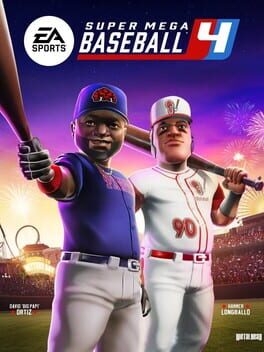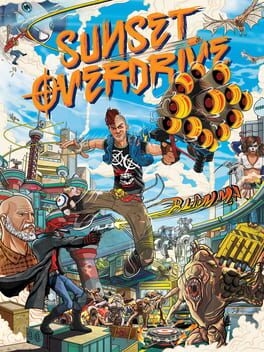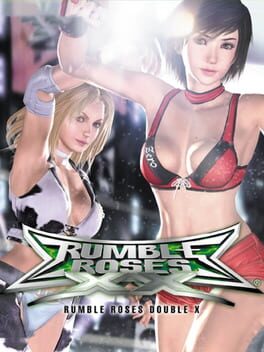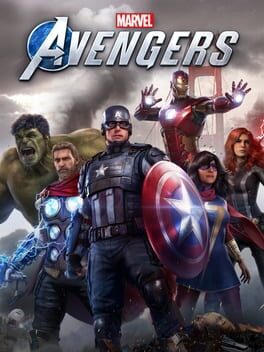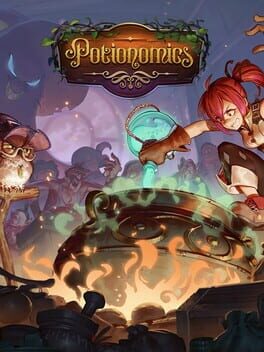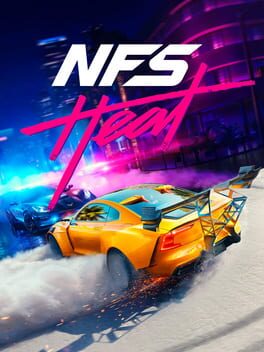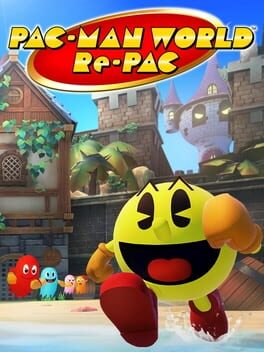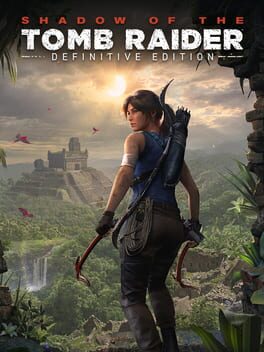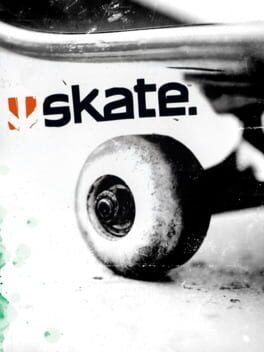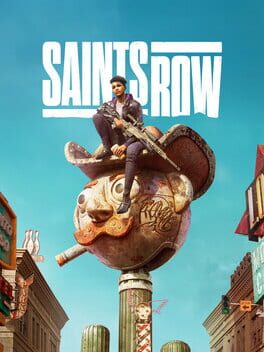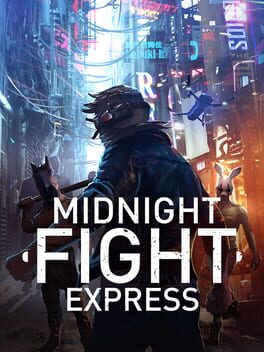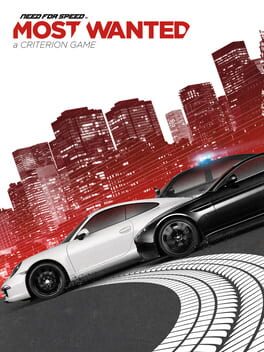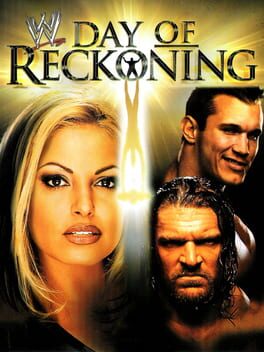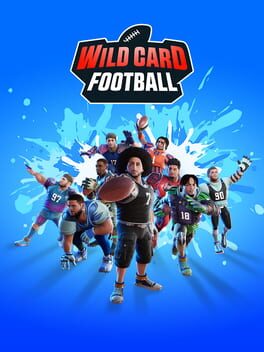ACasualPlayer
Largely the same as Super Mega Baseball 3, for better or for worse. The new (optional) Shuffle Draft option at the start of Franchise mode lets you pick from a pool of players to build your dream team. With real-life MLB legends now in the game, you can have a full Legends Franchise, a mix, or a classic Franchise of fictional SMB players. The new player traits are a welcome bonus that makes gameplay a bit more dynamic. Most players now have traits (abilities) that can be positive or negative. These range from increased pitching stats when pitching a 0-0 count, higher contact hitting when batting with 2 strikes, increased chance of dropping caught balls, increased running speed when stealing a base, etc. Traits fall under different chemistry categories, which adds some strategy in developing your team.
After some games, loyalty moments pop up which will affect a players loyalty (basically, a random question such as "You played a great game today, who had the best performance?), and picking between one of the two pre-selected players will increase their loyalty. Some instances pop up where you will end up decreasing player loyalty. At the end of a season, you can resign or release your players (loyalty comes into play here as more loyal players will be willing to stay for a lower salary and less loyal players will ask for a higher salary), in addition to signing free agents in the off-season. Sadly, no player trades are present. Training players works the same as in SMB3, but with much more opportunities along with random chances that can give pitchers a new pitch, and chances to gain or lose certain player traits.
Graphically, the game looks somewhat better. Player models look a bit worse as faces are more cartoony and for some reason, most players are fat or stocky.
The UI could use some work as some options such as substituting pitchers and navigating players in free agency menus require extra button presses.
The soundtrack is decent, mostly made up of songs and instrumentals probably created by local, no-name bands and music artists. The sound effects are a bit too zany and over-the-top, and some of the umpires come off as very energetic and enthusiastic in their strike call outs.
The Legends implementation feels lazy. It's nice having them there, though they mostly look like a step above the in-game created players.
Lastly, customization is pretty much the same. Some new player faces and models exist along with a boatload of player names for the announcer to call out during at-bat/pitch situations but expect the same level of SMB3's creation mode.
Some issues can probably be fixed in later updates as Super Mega Baseball 4 just released, but this entry is a decent improvement over its predecessor.
After some games, loyalty moments pop up which will affect a players loyalty (basically, a random question such as "You played a great game today, who had the best performance?), and picking between one of the two pre-selected players will increase their loyalty. Some instances pop up where you will end up decreasing player loyalty. At the end of a season, you can resign or release your players (loyalty comes into play here as more loyal players will be willing to stay for a lower salary and less loyal players will ask for a higher salary), in addition to signing free agents in the off-season. Sadly, no player trades are present. Training players works the same as in SMB3, but with much more opportunities along with random chances that can give pitchers a new pitch, and chances to gain or lose certain player traits.
Graphically, the game looks somewhat better. Player models look a bit worse as faces are more cartoony and for some reason, most players are fat or stocky.
The UI could use some work as some options such as substituting pitchers and navigating players in free agency menus require extra button presses.
The soundtrack is decent, mostly made up of songs and instrumentals probably created by local, no-name bands and music artists. The sound effects are a bit too zany and over-the-top, and some of the umpires come off as very energetic and enthusiastic in their strike call outs.
The Legends implementation feels lazy. It's nice having them there, though they mostly look like a step above the in-game created players.
Lastly, customization is pretty much the same. Some new player faces and models exist along with a boatload of player names for the announcer to call out during at-bat/pitch situations but expect the same level of SMB3's creation mode.
Some issues can probably be fixed in later updates as Super Mega Baseball 4 just released, but this entry is a decent improvement over its predecessor.
2023
Hi-Fi Rush is best described as a linear 3D character action beat-em up with rhythm game combat sequences, a Sunset Overdrive aesthetic, a comic book feel with a bit of a Persona 5-lite look, and the visual presentation and story of a Saturday Morning Cartoon.
While Hi-Fi Rush has the standard combat action gameplay with light platforming sections, light and heavy attacks along with a dodge button, collectible items to upgrade your health and special meters, data pads with information about the lore of the game world and gears to use to purchase more attacks and abilities, Hi-Fi Rush adds a gimmick to its combat. Everything in the game from the soundtrack to the environment pulses to the rhythm. Pressing the attack button at the right moment (or on-beat as the game refers to it) will give you a damage boost in combat. The game doesn't penalize you for attacking offbeat as this just gives you a damage boost in certain instances, so the game can be played perfectly fine like a normal action game. Though, there are cues and accessibility options to make attacking on-beat much easier.
Combat also includes a Devil May Cry-like letter grading system based on attacking, parrying, and landing attacks on beat. With multiple difficulties between Easy and Very Hard, this provides a good level of replayability for anyone wanting to chase after high scores.
Throughout the game, Chai will meet new characters in his quest to take down Spectra. These characters can be used in combat as extra tools in Chai's arsenal, and will also be used while moving and platforming through levels to solve mostly straightforward rhythm puzzles, hit switches, and break down walls and barriers along with stunning enemies and breaking their shields.
Between tracks (levels and missions), Chai can roam around a hideout that acts as a central hub. This small hub allows Chai to chat with the few friends he meets during the story (nothing Bioware-like, simply picking a few options), check and purchase upgrades, view found graffiti and collectibles, and even participate in pretty feature-rich training simulator mode akin to the practice modes in many modern day fighting games.
Boss battles are highly entertaining as every boss has different phases which can take the form of a typical 3D action battle, a timed mini-game, or a short Guitar Hero-esque rhythm section. As a bonus, dying during boss battles only puts you back to the beginning of the last phase you completed, so no having to play the entire battle all over again upon death.
As far as issues go, my only real (albeit minor) complaint with Hi-Fi Rush is that the combat lacks the ability to lock onto enemies. Combat works very well and you eventually gain the ability to launch yourself directly toward an enemy you're facing for direct combos, but a lock-on option would have been a handy utility with how frantic and hyperactive combat sections can get.
Microsoft not only did a good job shadow-dropping this game at the start of the year but also shadow-dropping an exclusive title bustling with flash, substance, style, and flashiness with 8s, 9s, and 10s across the board. For people who have a low tolerance for or dislike timed/rhythm-based button inputs and quick time events, Hi-Fi Rush may offer more frustration and difficulty than fun. Otherwise, fans of Devil May Cry, pre-reboot God of War, Bayonetta, and similar games may find Hi-Fi Rush to be a very worthy contender.
While Hi-Fi Rush has the standard combat action gameplay with light platforming sections, light and heavy attacks along with a dodge button, collectible items to upgrade your health and special meters, data pads with information about the lore of the game world and gears to use to purchase more attacks and abilities, Hi-Fi Rush adds a gimmick to its combat. Everything in the game from the soundtrack to the environment pulses to the rhythm. Pressing the attack button at the right moment (or on-beat as the game refers to it) will give you a damage boost in combat. The game doesn't penalize you for attacking offbeat as this just gives you a damage boost in certain instances, so the game can be played perfectly fine like a normal action game. Though, there are cues and accessibility options to make attacking on-beat much easier.
Combat also includes a Devil May Cry-like letter grading system based on attacking, parrying, and landing attacks on beat. With multiple difficulties between Easy and Very Hard, this provides a good level of replayability for anyone wanting to chase after high scores.
Throughout the game, Chai will meet new characters in his quest to take down Spectra. These characters can be used in combat as extra tools in Chai's arsenal, and will also be used while moving and platforming through levels to solve mostly straightforward rhythm puzzles, hit switches, and break down walls and barriers along with stunning enemies and breaking their shields.
Between tracks (levels and missions), Chai can roam around a hideout that acts as a central hub. This small hub allows Chai to chat with the few friends he meets during the story (nothing Bioware-like, simply picking a few options), check and purchase upgrades, view found graffiti and collectibles, and even participate in pretty feature-rich training simulator mode akin to the practice modes in many modern day fighting games.
Boss battles are highly entertaining as every boss has different phases which can take the form of a typical 3D action battle, a timed mini-game, or a short Guitar Hero-esque rhythm section. As a bonus, dying during boss battles only puts you back to the beginning of the last phase you completed, so no having to play the entire battle all over again upon death.
As far as issues go, my only real (albeit minor) complaint with Hi-Fi Rush is that the combat lacks the ability to lock onto enemies. Combat works very well and you eventually gain the ability to launch yourself directly toward an enemy you're facing for direct combos, but a lock-on option would have been a handy utility with how frantic and hyperactive combat sections can get.
Microsoft not only did a good job shadow-dropping this game at the start of the year but also shadow-dropping an exclusive title bustling with flash, substance, style, and flashiness with 8s, 9s, and 10s across the board. For people who have a low tolerance for or dislike timed/rhythm-based button inputs and quick time events, Hi-Fi Rush may offer more frustration and difficulty than fun. Otherwise, fans of Devil May Cry, pre-reboot God of War, Bayonetta, and similar games may find Hi-Fi Rush to be a very worthy contender.
2014
Mix Jet Set Radio’s grinding and movement, Crackdown’s jumping and verticality, a grungy apocalyptic Saints Row with self-aware story elements, and you get Sunset Overdrive. I originally played this game on my Xbox One in 2015, but stopped playing it due to a number of reasons. Now, I have finished the PC Game Pass version.
I can’t comment much on Sunset Overdrive’s story. It begins with a cutscene showing your created character working as a janitor at a pre-release concert party for Fizzco’s new energy drink “Overcharge.” Things get out of hand when everyone who consumes this new drink gets turned into mutants, causing mayhem and a near apocalypse in the city. Plot doesn’t seem consistent and feels disjointed throughout the game, though the dialogue is slightly enjoyable with self-aware humor that knows it is a video game.
Structure is quite different. Although it has the formula of an open world, third-person shooter, some gameplay elements are different. No driveable vehicles, pedestrians, cops or wanted levels exist. You’ll spend your time zip-lining, air-dashing, grinding, wall-running, bouncing atop buildings, vehicles and structures to traverse through Sunset City. No cover system means heavy emphasis is placed on always moving. Collectibles are scattered throughout the map, which feel fun to collect and never a chore due to the fluid, fun traversal system. Money earned in game can be used to purchase character customization items from shops, while overcharge energy drinks are used to purchase collectible maps (revealing collectibles in certain regions), amps that are perks slotted into weapons, overdrives which are abilities that give you buffs and bonuses in combat. Instead of typical weapons, you'll gain access to several different weapons that shoot acid, freeze enemies, burn foes, stun enemies, and shield you among various other ones.
Character customization is more than very serviceable. Creating a male or female character (who is referred to as just “Player:” in cutscenes) gives no advanced options for face morphing outside of selecting different facial structure parts, preset faces, eye color, and hair. Clothing selection also isn't as robust as say Saints Row 3 or 4, but feels more along the lines of the Tony Hawk Underground games. Considering the zany theme of the game, lots of wacky clothing items exist to make an interesting character.
While the main missions are fun, these mostly consist of going to an area, killing a group of enemies, going to another area, defending against a wave of enemies, escorting someone or an item, and repeating the cycle. Side missions consist of the same structure. Thankfully, the engaging movement system does make the missions more enjoyable even if they can suffer from repetition at times. Challenges do exist in the form of different activities like dashing through rings, killing enemies in different ways, delivering bombs within a time limit, and collecting points or destroying as many items as possible in an allotted time. A few main missions in particular were very luck based, like the Pigeon burning mission which requires you to burn a high number of barely spawning pigeons in a short time limit. Annoying missions like these did not pop up frequently, but the few that came up in an already repetitive mission structure made me want some variety.
Sunset Overdrive is also a short game, clocking in around 10 hours and 15 minutes (according to my in-game play time after the credits rolled.) Your game time may vary depending on your completionist and side mission focus. I could have seen this being a negative during the time when the Xbox One didn't have many exclusives and longer games were on the rise. On the other hand, playing this game in 2022 when almost every game under the sun is a lengthy experience was a welcome change of pace.
Sunset Overdrive is definitely a game that not only deserves to be played, but is highly in need of a sequel!
I can’t comment much on Sunset Overdrive’s story. It begins with a cutscene showing your created character working as a janitor at a pre-release concert party for Fizzco’s new energy drink “Overcharge.” Things get out of hand when everyone who consumes this new drink gets turned into mutants, causing mayhem and a near apocalypse in the city. Plot doesn’t seem consistent and feels disjointed throughout the game, though the dialogue is slightly enjoyable with self-aware humor that knows it is a video game.
Structure is quite different. Although it has the formula of an open world, third-person shooter, some gameplay elements are different. No driveable vehicles, pedestrians, cops or wanted levels exist. You’ll spend your time zip-lining, air-dashing, grinding, wall-running, bouncing atop buildings, vehicles and structures to traverse through Sunset City. No cover system means heavy emphasis is placed on always moving. Collectibles are scattered throughout the map, which feel fun to collect and never a chore due to the fluid, fun traversal system. Money earned in game can be used to purchase character customization items from shops, while overcharge energy drinks are used to purchase collectible maps (revealing collectibles in certain regions), amps that are perks slotted into weapons, overdrives which are abilities that give you buffs and bonuses in combat. Instead of typical weapons, you'll gain access to several different weapons that shoot acid, freeze enemies, burn foes, stun enemies, and shield you among various other ones.
Character customization is more than very serviceable. Creating a male or female character (who is referred to as just “Player:” in cutscenes) gives no advanced options for face morphing outside of selecting different facial structure parts, preset faces, eye color, and hair. Clothing selection also isn't as robust as say Saints Row 3 or 4, but feels more along the lines of the Tony Hawk Underground games. Considering the zany theme of the game, lots of wacky clothing items exist to make an interesting character.
While the main missions are fun, these mostly consist of going to an area, killing a group of enemies, going to another area, defending against a wave of enemies, escorting someone or an item, and repeating the cycle. Side missions consist of the same structure. Thankfully, the engaging movement system does make the missions more enjoyable even if they can suffer from repetition at times. Challenges do exist in the form of different activities like dashing through rings, killing enemies in different ways, delivering bombs within a time limit, and collecting points or destroying as many items as possible in an allotted time. A few main missions in particular were very luck based, like the Pigeon burning mission which requires you to burn a high number of barely spawning pigeons in a short time limit. Annoying missions like these did not pop up frequently, but the few that came up in an already repetitive mission structure made me want some variety.
Sunset Overdrive is also a short game, clocking in around 10 hours and 15 minutes (according to my in-game play time after the credits rolled.) Your game time may vary depending on your completionist and side mission focus. I could have seen this being a negative during the time when the Xbox One didn't have many exclusives and longer games were on the rise. On the other hand, playing this game in 2022 when almost every game under the sun is a lengthy experience was a welcome change of pace.
Sunset Overdrive is definitely a game that not only deserves to be played, but is highly in need of a sequel!
2006
A simple all-female wrestling game with sexy vixens, ruined by a confusing, frustrating unlock system and a lack of content. What Rumble Roses XX gets right is its character system. Though there are only 10 or so playable characters, every fighter (or Rose) has a face and a heel version, totaling up to 20 characters. In addition, a Superstar version of each Rose can also be unlocked. As this is a Mature rated wrestling game with only women, nearly every Roses’ gimmick caters to the typical male fantasy. You have a nurse named Anesthesia, a punk rocker with pigtails named Candy Cane, and a sexy cop named Sgt. Clements. The list goes on from there.
Superstar characters come into play with the popularity system. After a match, a Roses’ popularity will rise or fall. If it rises above 80, that you can choose a Superstar version of that Rose which is a super version with more powerful moves. If the popularity of said Rose falls below 80, the Superstar version is gone and must be raised above 80 to unlock again. Even though this may sound like a bad system, it makes sense when you consider how popularity works in professional wrestling and sports entertainment.
The gameplay is a dumbed-down, less complex version of SmackDown vs. Raw 2007. However, that’s not bad as the controls are very simple and easy to pick up and learn. The only issue is that controls are only found through a tutorial icon on the main menu. Pausing the game doesn’t give you a list of controls, and the only contextual controls that pop up on screen are a button for pins when the opponent is on the mat and a button for performing finishers when the situation calls for them.
Don’t expect a Story, Career, Season, or Tournament mode as there is no real single-player mode. Instead, the main menu acts as a hub (similar to an overworld map like in Virtua Fighter 5's Quest Mode or Def Jam Fight For New York's Story Mode) where you can select between exhibition mode (allowing you to pick the match option and your opponent), match icons that randomly pair you up with an opponent, an in-game shop, and a settings option. Aside from singles, tag, triple threat, four ways, and handicap matches, Street Fights and Queen’s Matches are the only gimmick matches. Street Fight plays like a watered-down fighting game where pins and submissions are disabled. Queen’s Match is basically a 1-on-1 match, except the Roses wear swimsuits and fight in a ring on the beach. The objective is the win, so the loser has to perform a humiliating act. It’s an interesting idea as you can choose what action the loser has to do upon selecting this match (yoga, dancing, limbo, doing a pose), but the post-match action is really only a cutscene and nothing spectacular.
Unlocking content is terrible and as a 2006 game, almost makes current-gen game unlock systems run for the hills. The achievements, while not difficult, are super time-consuming and take well over several hundred hours. To win a championship, you have to defeat all 9 default Roses once, win 15 singles matches, and win a few matches consecutively. Only then, a Champ icon will pop up, allowing you to fight for the title. Now if you want to unlock a Roses’ alter ego, you must do the exact same thing, with the rest of the 9 Roses, then defeat a Rose to unlock the alter ego. The problem is that the game gives no indication of ranking or stats outside of hours and the number of matches played. You also cannot simply play Exhibition matches and must choose one of the icons on the map, often forcing you to back in and out of the settings option just to have that one Rose you haven’t beaten show up.
The in-ring gameplay is mostly okay as it plays like a stripped down, yet workable version of SmackDown vs Raw 2006. Submissions seem to be an important factor since when one is performed, a camera icon pops up on the screen and you can rotate the thumbsticks to get a better view of the quote, unquote “action.” The amount of moves isn't massive, so expect to see your entire Roses moveset after playing a match for a few minutes. Every Rose has a Killer move, a Lethal move, and a Humiliation move. Killer moves are performed if your opponent is standing, while Lethal and Humiliation moves are position-dependent. Killer moves are glorified finishers, Lethal moves are more painful finishers and Humiliation moves are finishers/submissions that result in an instant win once performed. Unlike the WWE games, finishers are played out in a cinematic fashion similar to fighting games, so you can technically be attacked and perform your finisher while being hit in an animation.
The controls are great, and while the action happens at a brisk pace, it can feel a bit sluggish at times with somewhat slow movement and the odd hit detection. I guess it also doesn’t help that the camera view perspective is on the turnbuckle, versus the traditional ringside view. The A.I. is not the best. They put up a decent fight, but even on Easy, they tend to counter a lot of attacks.
There is a Create a Wrestler mode, although it is extremely limited. Very few options for hair and facial features exist and while you can unlock a select few costumes in the shop, they come as sets and do not allow you to really mix and match or individualize parts. To put it shortly, you won't be able to create anyone near the level of say, any WWE games’ Create a Wrestler mode.
I will give Rumble Roses XX credit since it is a unique, fun wrestling game that has a fair bit of personality with an interesting persona system. It just needed the content on the level of the SmackDown games and fewer grindy unlock requirements. This feels more like a director's cut rather than a sequel to the PS2 original. Playing this game with friends will provide some entertainment, but going into the ring along with Rumble Roses XX provides fun along with a match-up against confusion, annoyance, and frustration.
Superstar characters come into play with the popularity system. After a match, a Roses’ popularity will rise or fall. If it rises above 80, that you can choose a Superstar version of that Rose which is a super version with more powerful moves. If the popularity of said Rose falls below 80, the Superstar version is gone and must be raised above 80 to unlock again. Even though this may sound like a bad system, it makes sense when you consider how popularity works in professional wrestling and sports entertainment.
The gameplay is a dumbed-down, less complex version of SmackDown vs. Raw 2007. However, that’s not bad as the controls are very simple and easy to pick up and learn. The only issue is that controls are only found through a tutorial icon on the main menu. Pausing the game doesn’t give you a list of controls, and the only contextual controls that pop up on screen are a button for pins when the opponent is on the mat and a button for performing finishers when the situation calls for them.
Don’t expect a Story, Career, Season, or Tournament mode as there is no real single-player mode. Instead, the main menu acts as a hub (similar to an overworld map like in Virtua Fighter 5's Quest Mode or Def Jam Fight For New York's Story Mode) where you can select between exhibition mode (allowing you to pick the match option and your opponent), match icons that randomly pair you up with an opponent, an in-game shop, and a settings option. Aside from singles, tag, triple threat, four ways, and handicap matches, Street Fights and Queen’s Matches are the only gimmick matches. Street Fight plays like a watered-down fighting game where pins and submissions are disabled. Queen’s Match is basically a 1-on-1 match, except the Roses wear swimsuits and fight in a ring on the beach. The objective is the win, so the loser has to perform a humiliating act. It’s an interesting idea as you can choose what action the loser has to do upon selecting this match (yoga, dancing, limbo, doing a pose), but the post-match action is really only a cutscene and nothing spectacular.
Unlocking content is terrible and as a 2006 game, almost makes current-gen game unlock systems run for the hills. The achievements, while not difficult, are super time-consuming and take well over several hundred hours. To win a championship, you have to defeat all 9 default Roses once, win 15 singles matches, and win a few matches consecutively. Only then, a Champ icon will pop up, allowing you to fight for the title. Now if you want to unlock a Roses’ alter ego, you must do the exact same thing, with the rest of the 9 Roses, then defeat a Rose to unlock the alter ego. The problem is that the game gives no indication of ranking or stats outside of hours and the number of matches played. You also cannot simply play Exhibition matches and must choose one of the icons on the map, often forcing you to back in and out of the settings option just to have that one Rose you haven’t beaten show up.
The in-ring gameplay is mostly okay as it plays like a stripped down, yet workable version of SmackDown vs Raw 2006. Submissions seem to be an important factor since when one is performed, a camera icon pops up on the screen and you can rotate the thumbsticks to get a better view of the quote, unquote “action.” The amount of moves isn't massive, so expect to see your entire Roses moveset after playing a match for a few minutes. Every Rose has a Killer move, a Lethal move, and a Humiliation move. Killer moves are performed if your opponent is standing, while Lethal and Humiliation moves are position-dependent. Killer moves are glorified finishers, Lethal moves are more painful finishers and Humiliation moves are finishers/submissions that result in an instant win once performed. Unlike the WWE games, finishers are played out in a cinematic fashion similar to fighting games, so you can technically be attacked and perform your finisher while being hit in an animation.
The controls are great, and while the action happens at a brisk pace, it can feel a bit sluggish at times with somewhat slow movement and the odd hit detection. I guess it also doesn’t help that the camera view perspective is on the turnbuckle, versus the traditional ringside view. The A.I. is not the best. They put up a decent fight, but even on Easy, they tend to counter a lot of attacks.
There is a Create a Wrestler mode, although it is extremely limited. Very few options for hair and facial features exist and while you can unlock a select few costumes in the shop, they come as sets and do not allow you to really mix and match or individualize parts. To put it shortly, you won't be able to create anyone near the level of say, any WWE games’ Create a Wrestler mode.
I will give Rumble Roses XX credit since it is a unique, fun wrestling game that has a fair bit of personality with an interesting persona system. It just needed the content on the level of the SmackDown games and fewer grindy unlock requirements. This feels more like a director's cut rather than a sequel to the PS2 original. Playing this game with friends will provide some entertainment, but going into the ring along with Rumble Roses XX provides fun along with a match-up against confusion, annoyance, and frustration.
2020
Mediocre game that has an identity crisis. It's pretty much a 3D-beat-em-up with a single player campaign, Mass Effect-like hub area, and the endgame of Diablo 3 post-update. Think of it like Diablo 3, but with an Avengers skin and just not as great. The campaign was solid. Not groundbreaking or epic, but serviceable with a great performance by the likeable Kamala Khan. Fun combat that plays like a 3D-beat-em-up with a decent skill tree. Problem is, environments, mission objectives and enemy variety are minimal and get very repetitive. Performance is also not so good on a PS4 Slim with the framerate tanking with many enemies on screen and loading times taking 30-45 seconds. Even with the new playable heroes being added, it's difficult to really have fun with the game due to the level of repetition on the gameplay structure.
2022
Potionomics has to be the most original and interesting game I played all year. The DNA of Potionomics blends different gameplay genres and aspects together. It's a deckbuilder, visual novel, alchemy/potion creator, lite-RPG, shopkeeping simulator hybrid. Not every aspect is super deep, but everything that is present feels fleshed out and works very well.
Gameplay loop has you play as potion-maker Sylvia, who runs a shop specializing in selling potions. Potion selling is played out like a deck-building game, where cards are played to haggle the price of your potions to earn more gold. Instead of dying and getting a game over, customers have patience which counts down and if it reaches zero before closing the deal, they walk away without you making the potion sale. Time limits are present like the earlier Atelier games, where going to shops, visiting friends and brewing potions takes up parts of the day. As the days progress, the game introduces you to new friends providing various services such as ingredients, the ability to increase potion prices, better equipment for brewing and selling potions, etc. Some companions can even be sent out to locations, which will result in more and sometimes rarer ingredients, depending on how far they go in their expeditions with whatever potions you equip them with. You can even hang out with friends, give them gifts, and level them up, which will provide you with more cards to strategize your deck along with discounts when buying items.
Every 10 in-game days, a competition takes place and on the first calendar day, you are given 3 potions to create for the competition. Competitions play out in the same fashion as the potion selling deck-building battles, except the difficulty is increased. Played out in a “Best 2 out of 3 Rounds” format, if your potion is of higher quality and value than the opponent, you win that round automatically. If it is not, you will enter a deck-building battle and have to haggle the price up in order to win the competition.
As far as negatives go, this is not an easy game. Completion took 13 hours and 45 minutes according to my in-game save file, but my Steam profile has an 18 hour and 50 minute playtime due to me having to restart the game after a pre-update, difficult first competition boss battle. It may seem more chill with the colorful, cutesy graphics and orchestral musical score, but the time limit aspect along with the high difficulty at the start of the game means a lot of planning, time management, and attention to detail is needed when playing Potionomics. Stress is also a factor that comes into play during battles, where some customers and even competition bosses will debuff Sylvia and decrease her chances of raising interest when selling potions. Things do get much more manageable after the first two competitions as some updates have ironed out a few issues, but the management aspect still requires attention. Potionomics looks gorgeous visually and even runs perfectly fine, though some of the animations could have been smoother. Dialogue is great as are the Disney-looking cutscenes, but with everything being through text, I kept wishing there were actual voices like most modern-day visual novels. Once you complete the game, there is no New Game+ or option to continue playing. The only option is to start a new game or load a previous save. Fortunately, the game autosaves after every day, making it easy to jump back in at any point in game time. That last point could change in a future patch or update, but this still stands.
Potionomics is a great, unique hybrid of games that is worth playing for anyone wanting a different spin on visual novels, deckbuilding and potion/alchemy brewing.
Gameplay loop has you play as potion-maker Sylvia, who runs a shop specializing in selling potions. Potion selling is played out like a deck-building game, where cards are played to haggle the price of your potions to earn more gold. Instead of dying and getting a game over, customers have patience which counts down and if it reaches zero before closing the deal, they walk away without you making the potion sale. Time limits are present like the earlier Atelier games, where going to shops, visiting friends and brewing potions takes up parts of the day. As the days progress, the game introduces you to new friends providing various services such as ingredients, the ability to increase potion prices, better equipment for brewing and selling potions, etc. Some companions can even be sent out to locations, which will result in more and sometimes rarer ingredients, depending on how far they go in their expeditions with whatever potions you equip them with. You can even hang out with friends, give them gifts, and level them up, which will provide you with more cards to strategize your deck along with discounts when buying items.
Every 10 in-game days, a competition takes place and on the first calendar day, you are given 3 potions to create for the competition. Competitions play out in the same fashion as the potion selling deck-building battles, except the difficulty is increased. Played out in a “Best 2 out of 3 Rounds” format, if your potion is of higher quality and value than the opponent, you win that round automatically. If it is not, you will enter a deck-building battle and have to haggle the price up in order to win the competition.
As far as negatives go, this is not an easy game. Completion took 13 hours and 45 minutes according to my in-game save file, but my Steam profile has an 18 hour and 50 minute playtime due to me having to restart the game after a pre-update, difficult first competition boss battle. It may seem more chill with the colorful, cutesy graphics and orchestral musical score, but the time limit aspect along with the high difficulty at the start of the game means a lot of planning, time management, and attention to detail is needed when playing Potionomics. Stress is also a factor that comes into play during battles, where some customers and even competition bosses will debuff Sylvia and decrease her chances of raising interest when selling potions. Things do get much more manageable after the first two competitions as some updates have ironed out a few issues, but the management aspect still requires attention. Potionomics looks gorgeous visually and even runs perfectly fine, though some of the animations could have been smoother. Dialogue is great as are the Disney-looking cutscenes, but with everything being through text, I kept wishing there were actual voices like most modern-day visual novels. Once you complete the game, there is no New Game+ or option to continue playing. The only option is to start a new game or load a previous save. Fortunately, the game autosaves after every day, making it easy to jump back in at any point in game time. That last point could change in a future patch or update, but this still stands.
Potionomics is a great, unique hybrid of games that is worth playing for anyone wanting a different spin on visual novels, deckbuilding and potion/alchemy brewing.
2019
Best Need for Speed game for current-gen. The fact that this was the first NFS game to break the annual release did the game wonders, but EA's lack of support left us players wanting more. Microtransactions and the slot machine part upgrade system from Payback are gone. Just good old fashioned win races to earn money to upgrade cars and buy cars.
Heat's biggest gimmick is the Day/Night system. Set in a fictional version of Miami, Florida, the daytime has you compete in street legal (mostly closed circuit, track races) to earn money for upgrading parts and buying new vehicles. Nighttime has you compete in illegal street races (non-closed track like Underground) to earn REP for leveling up and unlocking better car parts. You can switch between day or night at any time (when not in a race) for your enjoyment.
Cops are relentless and can be a real pain if you don't have a well upgraded car. It can be annoying as when you earn REP from races, you must drive to a safehouse at night to "bank" your points. Get busted by the cops and it's all gone.
The day/night system is wrapped around a story centered around street racing and police corruption. It's standard, but quite interesting and has its moments.
Plenty of activities exist from stunt jumps, speed traps, drift trials and time trials to name a few.
Great Need for Speed game, and probably the best of the current-gen bunch, that deserved more recognition, love and attention.
Heat's biggest gimmick is the Day/Night system. Set in a fictional version of Miami, Florida, the daytime has you compete in street legal (mostly closed circuit, track races) to earn money for upgrading parts and buying new vehicles. Nighttime has you compete in illegal street races (non-closed track like Underground) to earn REP for leveling up and unlocking better car parts. You can switch between day or night at any time (when not in a race) for your enjoyment.
Cops are relentless and can be a real pain if you don't have a well upgraded car. It can be annoying as when you earn REP from races, you must drive to a safehouse at night to "bank" your points. Get busted by the cops and it's all gone.
The day/night system is wrapped around a story centered around street racing and police corruption. It's standard, but quite interesting and has its moments.
Plenty of activities exist from stunt jumps, speed traps, drift trials and time trials to name a few.
Great Need for Speed game, and probably the best of the current-gen bunch, that deserved more recognition, love and attention.
2022
Having not played the PS1 original, Pac-Man World Re-Pac is a very fun 3D platformer that does a good job of bringing Pac-Man into the realm of 3D. Note for Nintendo Switch players, I recommend going into the settings and changing the resolution setting to Performance mode for a smooth, 60 fps gameplay feature.
Game setup is similar to early 3D platformers like Crash Bandicoot. You have a hub area, each specializing in a theme (ruins, factory, funhouse, etc.) each consisting of 3 levels and a boss level. Levels take on a linear 3D format with changing camera perspectives as levels go on. Pac-Man can pickup power pellets to throw at enemies, perform a Sonic-like dash and butt bounce on enemies or reach higher platforms. Switches, increasingly tricky platforming and light puzzles are scattered throughout every level. The challenge comes from finding all of the PACMAN letter across every level, which grants access to a timed bonus stage at the end where Pac-Man has to collect all the fruit.
A good bit of collectibles exist from health pickups to extra lives to fruit to coins. After completing a level, any coins found are used in a slot machine mini-game that grants high score bonuses and even extra lives. Levels even have mazes that act as re-imagined homages to the O.G. Pac-Man game, but with some traps to make mazes harder. Bosses are unique, either requiring you to combine your use of Pac-Man abilities to defeat them like in an old school 3D platformer or involving the game utilizing a classic Namco Museum title to take on a boss (A Galaxian boss and Pac-Man Rally-like Race for instance.)
At times, platforming can be frustrating with early 3D platformer jank being present - depth perception issues, more difficult stages popping early on, not being able to tell if the area below is a pit, etc.
Difficulty aside, these did not detract much from my enjoyment as Pac-Man World Re-Pac is a fun remake with lots of charm and enjoyment that makes me hopeful for a possible World 2 and 3 remake in the future.
Game setup is similar to early 3D platformers like Crash Bandicoot. You have a hub area, each specializing in a theme (ruins, factory, funhouse, etc.) each consisting of 3 levels and a boss level. Levels take on a linear 3D format with changing camera perspectives as levels go on. Pac-Man can pickup power pellets to throw at enemies, perform a Sonic-like dash and butt bounce on enemies or reach higher platforms. Switches, increasingly tricky platforming and light puzzles are scattered throughout every level. The challenge comes from finding all of the PACMAN letter across every level, which grants access to a timed bonus stage at the end where Pac-Man has to collect all the fruit.
A good bit of collectibles exist from health pickups to extra lives to fruit to coins. After completing a level, any coins found are used in a slot machine mini-game that grants high score bonuses and even extra lives. Levels even have mazes that act as re-imagined homages to the O.G. Pac-Man game, but with some traps to make mazes harder. Bosses are unique, either requiring you to combine your use of Pac-Man abilities to defeat them like in an old school 3D platformer or involving the game utilizing a classic Namco Museum title to take on a boss (A Galaxian boss and Pac-Man Rally-like Race for instance.)
At times, platforming can be frustrating with early 3D platformer jank being present - depth perception issues, more difficult stages popping early on, not being able to tell if the area below is a pit, etc.
Difficulty aside, these did not detract much from my enjoyment as Pac-Man World Re-Pac is a fun remake with lots of charm and enjoyment that makes me hopeful for a possible World 2 and 3 remake in the future.
The thing I liked about Shadow of the Tomb Raider was more of an added emphasis on puzzles, making it closer to the Legend-Anniversary-Underworld games. Rise was great (a masterpiece), but Shadow just adds in more here and there. The narrative is just not as strong as Rise or 2013. It starts strong, then drags in the middle with a lot of optional side-quests, picks back up and no spoilers, but has the weakest, unsatisfying ending in the trilogy. Action combat was fine, but I was quite taken out that one section near the end of the game played more like something out of a Rambo or the Expendables movie. There's a good bit of stealth combat, which was a lot of fun to sneak around with and adds to the classic feel. Exploration and puzzles feel strong with a nice difficulty.
While I would have preferred story-based DLC and a Croft Manor to explore rather than 7 separate challenge tombs, the DLC tombs are well-thought out, engaging, and provide that classic Tomb Raider challenge that I felt with some of the main game puzzles. Most of them are quite different enough to add some variation and mixes things up. Challenge tombs can either be played traditionally, or in a score attack mode or a time trial mode with leaderboards.
I consider Shadow of the Tomb Raider my favorite out of the Survivor Reboot trilogy, but wish the narrative and story was as strong as its predecessors.
While I would have preferred story-based DLC and a Croft Manor to explore rather than 7 separate challenge tombs, the DLC tombs are well-thought out, engaging, and provide that classic Tomb Raider challenge that I felt with some of the main game puzzles. Most of them are quite different enough to add some variation and mixes things up. Challenge tombs can either be played traditionally, or in a score attack mode or a time trial mode with leaderboards.
I consider Shadow of the Tomb Raider my favorite out of the Survivor Reboot trilogy, but wish the narrative and story was as strong as its predecessors.
2007
.skate is a simulation take on skateboarding that adopts a flick-it control scheme (very similar to Fight Night's analog stick punch system) where the right stick is used to make your skater ollie/jump and perform various flips and tricks. Buttons are used to push and pump out of ramps to gain air while the triggers are used for grabs and air tricks. The learning curve is a bit steep, but very rewarding once you get the controls down. Tutorials also do a great job of easing into the control scheme and gameplay.
Story is basic but works for .skate. You create a skater and meet up with other skaters that give various challenges such as performing certain tricks, grinds, grabs, timed street contests, very contests and own the stop (where you much beat a preset score on a certain landmark) along with various other challenges. .skate is set on an open world city with various locations involving different landmarks that offer various spots for skating and completing challenges.
As the game name implies, you create a skater (male only, no female skater creation option, which for its time is a very limited feature that does offer a good variety of real life skateboard clothing brands and items) and go. No skills, upgrades and stats are here. Just you, your skater, skateboard and an open world skating playground literally at your fingertips.
.skate's biggest issue is that you cannot get off your board, which can make traversing and trying to get to certain spots quite frustrating and annoying. Thankfully, this feature was added in the sequels.
The art style and UI are very Sk8r-esque with grunge splashes and a magazine look that make you feel like you are watching someone skateboard. It also draws you in due to the fact that the camera is placed near the ground, following your skater at a fish eye lens perspective.
EA's 2007 .skate is a solid entry that pushed forward a new take on the skateboarding video game genre. Some aspects of the game feel dated compared to Skate 2 and 3, but .skate is a fun trip down memory lane.
Story is basic but works for .skate. You create a skater and meet up with other skaters that give various challenges such as performing certain tricks, grinds, grabs, timed street contests, very contests and own the stop (where you much beat a preset score on a certain landmark) along with various other challenges. .skate is set on an open world city with various locations involving different landmarks that offer various spots for skating and completing challenges.
As the game name implies, you create a skater (male only, no female skater creation option, which for its time is a very limited feature that does offer a good variety of real life skateboard clothing brands and items) and go. No skills, upgrades and stats are here. Just you, your skater, skateboard and an open world skating playground literally at your fingertips.
.skate's biggest issue is that you cannot get off your board, which can make traversing and trying to get to certain spots quite frustrating and annoying. Thankfully, this feature was added in the sequels.
The art style and UI are very Sk8r-esque with grunge splashes and a magazine look that make you feel like you are watching someone skateboard. It also draws you in due to the fact that the camera is placed near the ground, following your skater at a fish eye lens perspective.
EA's 2007 .skate is a solid entry that pushed forward a new take on the skateboarding video game genre. Some aspects of the game feel dated compared to Skate 2 and 3, but .skate is a fun trip down memory lane.
2022
The Saints Row reboot provides some fun to be had. However, it feels last-gen and lacking in different ways.
Saint Ileso provides a great wild-west location with some diverse scenery and locations. Characters (the new Saints crew) never connected with me during my playthrough. Many people will be divided on this aspect of the game and while I wanted to give the story a chance, I didn’t find the characters that much likeable (I won’t say I hated them, more like a “meh” feeling) compared to Shaundi, Gat or Pierce. Mission variety is okay, but comes off unstructured. Three rival gangs exist, but only one gang seems to be the focus.
Combat is the weakest aspect of the game. Shooting works but has a clunky and wonky feel to it. It felt closer to a late PS2, early 360 era third-person game compared to something more modern or refined such as Ghost Recon Wildlands, the Survivor Tomb Raider Trilogy or the Mafia trilogy. Several settings do exist to change the aiming controls and sensitivity, and of course damage does increase when upgrading weapons, but it could have used more refinement. Dodge-rolling and crouching are nice, but I can’t help but feel that a cover system would have helped to alleviate these issues. Melee works as expected with the option to purchase different melee weapons from gun shops, but don’t expect any variation beyond pressing R2 to attack. Instead of health recovering overtime, takedowns must be performed to regain health (similar to 3D beat-em-ups) when a bar fills up to 100% from gaining kills in combat.
Driving vehicles and flying helicopters works and has your typical arcade-like handling model. There’s a new sideswipe smash mechanic where you can press square to slam into vehicles, like an arcade style racing game Vehicle selection is diverse, even including go karts, golf karts, a hoverboard and monster trucks. Car customization has a lot of detail and upgrades available.
Criminal Ventures/Side Hustles are the diversions and side activities of the Saints Row reboot. Early in the game, you’ll gain access to a Criminal Ventures map. This allows you to place a venture in an area on the city’s map region dictating where you want to partake in specific ventures. Some fan favorites like Paparazzi, Fuzz, Snatch, and ho'ing yourself out are gone, while Insurance Fraud, Jimrob’s Garage (Chop Shop from SR2) and Ridin’ Shotgun (a modified version of Guardian Angel from SR3) return along with new ventures consisting of a mix of shooting and driving (mostly driving).
Many accessibility options and sliders exist such as enemy toughness level, vehicle combat difficulty, wanted level difficulty, ammo scarcity, and timed objective difficulty among other options to tailor your play experience.
As far as areas that the reboot gets wrong, stores are basically the only buildings that can be entered. No access to malls, casinos, strip clubs, bars, etc. unless you're playing a story mission. Given that the city has a diverse, wild-west look and feel to it, this is quite disappointing seeing that Saints Row 2 allowed you to enter multiple buildings. This is also one of those games where you must be up close and in a specific spot in order to interact with an object. The city can feel lifeless at times, though I'm not sure if this is something exclusive to the last-gen versions. Robbing stores is nonexistent. Graphics are nothing special. Character customization is mostly robust, with the option to switch between created/downloaded custom characters on the fly like Watch Dogs Legion and GTA V being the best aspect. Unfortunately, some basic clothing options are missing and while there are several stores throughout the city, most clothing options are the same.
Crashes and major bugs were minimal during my playthrough, but annoyances like interact points not appearing and my vehicle disappearing and teleporting me outside were rare, but frustrating when they occurred. Framerate was mostly stable (hovering around 30 fps) as one would expect from a PS4 game.
Saints Row is just average. Not bad but not great. Good, but nothing special or extraordinary. Provides some fun and a customizable challenge, but doesn't do anything super special or standout. Worth playing if you want a fun open world game to mess around in. Not worth it if you are looking for something that will blow you away.
Saint Ileso provides a great wild-west location with some diverse scenery and locations. Characters (the new Saints crew) never connected with me during my playthrough. Many people will be divided on this aspect of the game and while I wanted to give the story a chance, I didn’t find the characters that much likeable (I won’t say I hated them, more like a “meh” feeling) compared to Shaundi, Gat or Pierce. Mission variety is okay, but comes off unstructured. Three rival gangs exist, but only one gang seems to be the focus.
Combat is the weakest aspect of the game. Shooting works but has a clunky and wonky feel to it. It felt closer to a late PS2, early 360 era third-person game compared to something more modern or refined such as Ghost Recon Wildlands, the Survivor Tomb Raider Trilogy or the Mafia trilogy. Several settings do exist to change the aiming controls and sensitivity, and of course damage does increase when upgrading weapons, but it could have used more refinement. Dodge-rolling and crouching are nice, but I can’t help but feel that a cover system would have helped to alleviate these issues. Melee works as expected with the option to purchase different melee weapons from gun shops, but don’t expect any variation beyond pressing R2 to attack. Instead of health recovering overtime, takedowns must be performed to regain health (similar to 3D beat-em-ups) when a bar fills up to 100% from gaining kills in combat.
Driving vehicles and flying helicopters works and has your typical arcade-like handling model. There’s a new sideswipe smash mechanic where you can press square to slam into vehicles, like an arcade style racing game Vehicle selection is diverse, even including go karts, golf karts, a hoverboard and monster trucks. Car customization has a lot of detail and upgrades available.
Criminal Ventures/Side Hustles are the diversions and side activities of the Saints Row reboot. Early in the game, you’ll gain access to a Criminal Ventures map. This allows you to place a venture in an area on the city’s map region dictating where you want to partake in specific ventures. Some fan favorites like Paparazzi, Fuzz, Snatch, and ho'ing yourself out are gone, while Insurance Fraud, Jimrob’s Garage (Chop Shop from SR2) and Ridin’ Shotgun (a modified version of Guardian Angel from SR3) return along with new ventures consisting of a mix of shooting and driving (mostly driving).
Many accessibility options and sliders exist such as enemy toughness level, vehicle combat difficulty, wanted level difficulty, ammo scarcity, and timed objective difficulty among other options to tailor your play experience.
As far as areas that the reboot gets wrong, stores are basically the only buildings that can be entered. No access to malls, casinos, strip clubs, bars, etc. unless you're playing a story mission. Given that the city has a diverse, wild-west look and feel to it, this is quite disappointing seeing that Saints Row 2 allowed you to enter multiple buildings. This is also one of those games where you must be up close and in a specific spot in order to interact with an object. The city can feel lifeless at times, though I'm not sure if this is something exclusive to the last-gen versions. Robbing stores is nonexistent. Graphics are nothing special. Character customization is mostly robust, with the option to switch between created/downloaded custom characters on the fly like Watch Dogs Legion and GTA V being the best aspect. Unfortunately, some basic clothing options are missing and while there are several stores throughout the city, most clothing options are the same.
Crashes and major bugs were minimal during my playthrough, but annoyances like interact points not appearing and my vehicle disappearing and teleporting me outside were rare, but frustrating when they occurred. Framerate was mostly stable (hovering around 30 fps) as one would expect from a PS4 game.
Saints Row is just average. Not bad but not great. Good, but nothing special or extraordinary. Provides some fun and a customizable challenge, but doesn't do anything super special or standout. Worth playing if you want a fun open world game to mess around in. Not worth it if you are looking for something that will blow you away.
Stylish, challenging, frustrating beat 'em up with an isometric Diablo camera perspective and a twin stick control scheme.
About 30 levels in, Midnight Fight Express has quite the fun, yet flawed gameplay. You can attack, grab enemies, parry/block, dodge roll, use and throw guns/weapons (speaking of weapons, these are scattered just about everywhere for your disposal).
40 Levels exist, taking anywhere from 2-5 or so minutes. Score is based off of several performance factors. Completing levels rewards money, which can be used to buy in-game items to customize and outfit your character, and even buy enemy/boss skins to further set the appearance of your character. A skill and upgrade tree also exists for further developing attack, defense, grab and other combat abilities. Upgrades and skills are quite basic and don't go as deep as other 3D beat 'em ups or hack-n-slash games. I'd even go as far to say the most of the skills lacked impact or any real advantage over the few that really mattered. For an indie title, customization is quite deep with a fair amount of options.
Since the game is played in an isometric 3D format, there is more freedom on movement instead of just walking left to right. But levels are linear for the most part. Secrets and unlockables can be found in levels as well. Combat is fun if quite simplistic, but can become quite challenging and even a bit button mashy as levels progress. A lot of dodge rolling and parrying is involved, especially in middle and later levels where some cheap difficulty spikes occur. You'll be swarmed by enemies, some of which have weapons and attacks capable of either taking chunks of your health or one-hit-killing you, making sections require you to die an annoying amount of deaths before you get lucky enough to pass them. In this case, the game at several points ends up revolving around luck rather than your skill. This was all under my Normal mode difficulty playthrough, which is the default and easiest difficulty in the game. A few extra settings do exist to somewhat remedy this issue like setting your health higher and decreasing enemy aggressiveness, but it doesn't necessarily make the experience noticeably easier.
Achievements also exist, which is a very welcome addition for the Switch version seeing that most Switch games are void of achievements. With a statistics page, a best score/rank/time challenge for every level and different optional objectives per level (albeit difficult objectives), replayability and challenge is definitely there in Midnight Fight Express.
Graphics and Audio look and sound just fine. Visuals have a clean HD, 3D polygon style (like a PS1 or N64 game with full blown remade textures) and the music has an EDM techno, dubstep rock sound going on while bashing thugs up and down the various levels. No multiplayer or co-op is present. The only multiplayer aspect available are leaderboards for chasing after high scores. A training mode also exists to practice your skills against enemies with a decent amount of options available. Very smooth gameplay in handheld mode on Switch, with very few framerate drops at small instances.
Midnight Fight Express has the DNA and design of a well designed, creative 3D beat 'em up. However, the difficulty spikes that frequently pop up quite early in the game dragged down the enjoyment I had with this one. Have read that a patch has been deployed for the Steam version that has not made it's way to consoles yet. Unscored for now, but maybe when the patch released on Switch and I finish the final 10 levels, final thoughts may change.
About 30 levels in, Midnight Fight Express has quite the fun, yet flawed gameplay. You can attack, grab enemies, parry/block, dodge roll, use and throw guns/weapons (speaking of weapons, these are scattered just about everywhere for your disposal).
40 Levels exist, taking anywhere from 2-5 or so minutes. Score is based off of several performance factors. Completing levels rewards money, which can be used to buy in-game items to customize and outfit your character, and even buy enemy/boss skins to further set the appearance of your character. A skill and upgrade tree also exists for further developing attack, defense, grab and other combat abilities. Upgrades and skills are quite basic and don't go as deep as other 3D beat 'em ups or hack-n-slash games. I'd even go as far to say the most of the skills lacked impact or any real advantage over the few that really mattered. For an indie title, customization is quite deep with a fair amount of options.
Since the game is played in an isometric 3D format, there is more freedom on movement instead of just walking left to right. But levels are linear for the most part. Secrets and unlockables can be found in levels as well. Combat is fun if quite simplistic, but can become quite challenging and even a bit button mashy as levels progress. A lot of dodge rolling and parrying is involved, especially in middle and later levels where some cheap difficulty spikes occur. You'll be swarmed by enemies, some of which have weapons and attacks capable of either taking chunks of your health or one-hit-killing you, making sections require you to die an annoying amount of deaths before you get lucky enough to pass them. In this case, the game at several points ends up revolving around luck rather than your skill. This was all under my Normal mode difficulty playthrough, which is the default and easiest difficulty in the game. A few extra settings do exist to somewhat remedy this issue like setting your health higher and decreasing enemy aggressiveness, but it doesn't necessarily make the experience noticeably easier.
Achievements also exist, which is a very welcome addition for the Switch version seeing that most Switch games are void of achievements. With a statistics page, a best score/rank/time challenge for every level and different optional objectives per level (albeit difficult objectives), replayability and challenge is definitely there in Midnight Fight Express.
Graphics and Audio look and sound just fine. Visuals have a clean HD, 3D polygon style (like a PS1 or N64 game with full blown remade textures) and the music has an EDM techno, dubstep rock sound going on while bashing thugs up and down the various levels. No multiplayer or co-op is present. The only multiplayer aspect available are leaderboards for chasing after high scores. A training mode also exists to practice your skills against enemies with a decent amount of options available. Very smooth gameplay in handheld mode on Switch, with very few framerate drops at small instances.
Midnight Fight Express has the DNA and design of a well designed, creative 3D beat 'em up. However, the difficulty spikes that frequently pop up quite early in the game dragged down the enjoyment I had with this one. Have read that a patch has been deployed for the Steam version that has not made it's way to consoles yet. Unscored for now, but maybe when the patch released on Switch and I finish the final 10 levels, final thoughts may change.
Most Wanted in name only. This game is more of a "Be The Racer" side from Need for Speed Hot Pursuit. It's interesting and not too bad (even has a decent open world city), but not one of the best Need for Speed games.
There's no story present. Just get in a car, do races, drive and outrun the cops. Biggest gimmick with Most Wanted 2012 are jackspots, which the tutorial describes as "If you can find it, you can drive it." Cars are parked throughout the city with a manufacturer logo hovering over them, meaning all you have to do is find the car and press a button to switch to it, thus adding it to your collection. No extras here. No car customization, paint decals or anything out of the ordinary.
Every car has their own set of races and upgrades. Upgrades are basic, from adding nitrous to taking less damage. I really wasn't a fan of how to change your car, set race destination or to pretty much do anything, you have to press left on the d-pad toggling a menu system in the top left corner.
Car handling felt okay. I found most vehicles controlled way too heavily which made turning around and navigating corners difficult. The cops are also super relentless. Escaping cops enters a brief cooldown period (length of cooldown depends on how high your Heat/Wanted level is), but I often found that cops would show up notfar off from my location and pick up the pursuit, making cops unavoidable. Most of my time with the game was spent trying to shake cops in an attempt to be able to start races.
Jackspots are the only cool aspect about Most Wanted 2012. Only recommend if you love the idea of outrunning cops.
There's no story present. Just get in a car, do races, drive and outrun the cops. Biggest gimmick with Most Wanted 2012 are jackspots, which the tutorial describes as "If you can find it, you can drive it." Cars are parked throughout the city with a manufacturer logo hovering over them, meaning all you have to do is find the car and press a button to switch to it, thus adding it to your collection. No extras here. No car customization, paint decals or anything out of the ordinary.
Every car has their own set of races and upgrades. Upgrades are basic, from adding nitrous to taking less damage. I really wasn't a fan of how to change your car, set race destination or to pretty much do anything, you have to press left on the d-pad toggling a menu system in the top left corner.
Car handling felt okay. I found most vehicles controlled way too heavily which made turning around and navigating corners difficult. The cops are also super relentless. Escaping cops enters a brief cooldown period (length of cooldown depends on how high your Heat/Wanted level is), but I often found that cops would show up notfar off from my location and pick up the pursuit, making cops unavoidable. Most of my time with the game was spent trying to shake cops in an attempt to be able to start races.
Jackspots are the only cool aspect about Most Wanted 2012. Only recommend if you love the idea of outrunning cops.
2004
No Mercy is great, but Day of Reckoning is almost the perfect clone/successor to the AKI N64 wrestling games, due to the similar control scheme with grapples and strikes and the ability to spam finishers as many times as possible in 30-seconds among other things. It takes the classic AKI game formula and modernizes it by making the DOR games play at a faster pace, allows for any move to be broken up with any move, a momentum shift mechanic where you can switch your health and spirit status with your opponent, and lets you store up to 3 finisher states among other aspects (yeah, you could literally hit 9 finishers on someone!) The enjoyable story mode and great Create-A-Wrestler mode with a Paint tool for creating logos has given me hours of enjoyment.
Biggest drawback is that being a Gamecube game, it lacks in modes and features compared to the PS2 SmackDown games. No championship defenses or title matches outside of story mode. Very limited roster with only 5 or so divas. Limited CAW slots (about 16) and somewhat long load times. Match types are also pretty typical. You have Cage, Table, Ladder, Hell in a Cell and Hardcore which can be played in Single and Multi-man variants, but anything more special than that like Slobberknocker, Backstage Brawl and 3 Stages of Hell don't exist. Amazingly fun wrestling game that would be the G.O.A.T. with the features of a Smackdown game!
Biggest drawback is that being a Gamecube game, it lacks in modes and features compared to the PS2 SmackDown games. No championship defenses or title matches outside of story mode. Very limited roster with only 5 or so divas. Limited CAW slots (about 16) and somewhat long load times. Match types are also pretty typical. You have Cage, Table, Ladder, Hell in a Cell and Hardcore which can be played in Single and Multi-man variants, but anything more special than that like Slobberknocker, Backstage Brawl and 3 Stages of Hell don't exist. Amazingly fun wrestling game that would be the G.O.A.T. with the features of a Smackdown game!
2023
Wild Card Football plays more like NFL Street with Mario Kart-style power-ups in the form of wild cards. Every down before a play, the offense and defense can play wild cards with several effects ranging from but not limited to increasing/decreasing the speed or stamina of the whole team or specific players, instantly gaining extra yards, having the next tackle force a turnover, increase/decrease fumble/interception odds, blocking the opponent's cards, turning the team or ball carrier invisible, placing oil slicks on the field, giving the ball carrier a rotating bumper or electron (similar to the triple shell Mario Kart power-up), etc.
Wild cards can also be turned off (in Season and Quick Play only) for a traditional 7-on-7 arcade style football game, akin to a toned-down, but serviceable version of NFL Street. Gameplay is generally okay and feels fun, but spinning, hurdling, showboating, and calling audibles aren't present. A one button QTE pops up every time you hand the ball off to your running back for a running play, or when you attempt to break through the offensive line, which takes getting used to. You can stiff arm, use turbo and juke, though the AI has a tendency to stop you from running more than 2 yards. Passing mostly works, though manual catching has a tendency to cause your receiver to stop dead in his tracks for a moment, while the AI will frequently jump and swat your many pass attempts.
Game modes only consist of Quick Play, a shortened Season Mode, and Dream Team. No depth charts, stat tracking, drive summaries, roster management (aside from building your Dream Team), or anything in-depth exists. Dream Team is the main go to mode where you play the "Tour" option and play through games (some include objectives like first to score wins, play with no wild cards, stop the opponent from scoring in one drive, etc.) with your 49 Overall team, earning packs (lootboxes) to earn better cards, players, and customization options while leveling up your players by winning games. Inside of Dream Mode is an online league mode that acts as the ranked/competitive mode, where you play against online players Dream Teams to climb the division ranks to earn tickets. Tickets are another currency that can be used to instantly purchase any card (wild card, player or cosmetic) through an in-game shop. Cards you own can also be traded up for better or different cards. While this sounds microtransaction driven, at the time of this review 3 days after the games release, no microtransactions or option to buy premium currency exists.
The big issue with Wild Card Football is that for an arcade style sports game, the pace is quite a slog as games take a while to get through. A number of unnecessary celebrations, cut scenes, and animations play in between plays, making a standard 2-minute quarter game end up taking between 30-40 minutes. Add in playing against an online opponent with having to wait for them to choose their plays and cards, and you're looking at the same time or even longer just to finish one online game. Compare this to the classic NFL Blitz and NFL Street games where you could play through a game between 10-20 minutes.
Wild Card Football feels like a better arcade like attempt at replicating a sport over Saber's previous NBA 2K Playgrounds and WWE 2K Playgrounds offerings, but the slow pace, grindy unlock approach, and lack of long term content make it a game that is very hard to recommend - unless you're dying for an arcade football game and have no way to play NFL Blitz, Street or similar titles from the past generations. It's nice having another arcade sports game in a saturated market filled with sports simulation titles, but this game definitely needed more training and preparation before hitting the competition on the market.
Wild cards can also be turned off (in Season and Quick Play only) for a traditional 7-on-7 arcade style football game, akin to a toned-down, but serviceable version of NFL Street. Gameplay is generally okay and feels fun, but spinning, hurdling, showboating, and calling audibles aren't present. A one button QTE pops up every time you hand the ball off to your running back for a running play, or when you attempt to break through the offensive line, which takes getting used to. You can stiff arm, use turbo and juke, though the AI has a tendency to stop you from running more than 2 yards. Passing mostly works, though manual catching has a tendency to cause your receiver to stop dead in his tracks for a moment, while the AI will frequently jump and swat your many pass attempts.
Game modes only consist of Quick Play, a shortened Season Mode, and Dream Team. No depth charts, stat tracking, drive summaries, roster management (aside from building your Dream Team), or anything in-depth exists. Dream Team is the main go to mode where you play the "Tour" option and play through games (some include objectives like first to score wins, play with no wild cards, stop the opponent from scoring in one drive, etc.) with your 49 Overall team, earning packs (lootboxes) to earn better cards, players, and customization options while leveling up your players by winning games. Inside of Dream Mode is an online league mode that acts as the ranked/competitive mode, where you play against online players Dream Teams to climb the division ranks to earn tickets. Tickets are another currency that can be used to instantly purchase any card (wild card, player or cosmetic) through an in-game shop. Cards you own can also be traded up for better or different cards. While this sounds microtransaction driven, at the time of this review 3 days after the games release, no microtransactions or option to buy premium currency exists.
The big issue with Wild Card Football is that for an arcade style sports game, the pace is quite a slog as games take a while to get through. A number of unnecessary celebrations, cut scenes, and animations play in between plays, making a standard 2-minute quarter game end up taking between 30-40 minutes. Add in playing against an online opponent with having to wait for them to choose their plays and cards, and you're looking at the same time or even longer just to finish one online game. Compare this to the classic NFL Blitz and NFL Street games where you could play through a game between 10-20 minutes.
Wild Card Football feels like a better arcade like attempt at replicating a sport over Saber's previous NBA 2K Playgrounds and WWE 2K Playgrounds offerings, but the slow pace, grindy unlock approach, and lack of long term content make it a game that is very hard to recommend - unless you're dying for an arcade football game and have no way to play NFL Blitz, Street or similar titles from the past generations. It's nice having another arcade sports game in a saturated market filled with sports simulation titles, but this game definitely needed more training and preparation before hitting the competition on the market.
